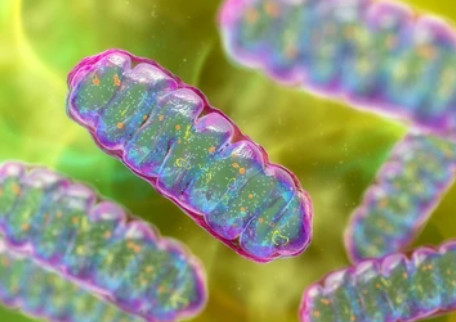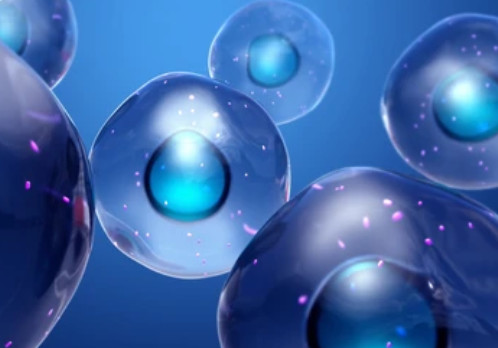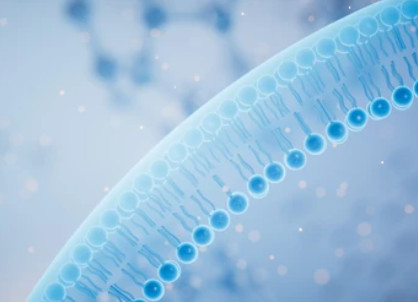Composition, Functions and Significance of Cell Membranes: Insights from Biomembrane Omics
Online InquiryComposition of Membrane
The membrane composition in eukaryotic cells comprises lipids and proteins that combine to form an asymmetric bilayer consisting of inner and outer leaflets. The primary function of this lipid bilayer is to act as a structural barrier and provide a foundation for extracellular sensing. The remainder of the membrane is composed of proteins, which are distributed in a mosaic-like arrangement, with some proteins embedded on the membrane surface and others spanning the lipid bilayer. The unique properties and functions of the membrane are determined by the specific types of proteins present, the asymmetry of protein distribution, and the synergistic interaction with lipids.
What types of lipids are in membranes?
Lipids are the fundamental components of biological membranes. The mammalian cell membrane contains approximately 109 lipid molecules, and there are about 5x106 lipid molecules per square micrometer of membrane. The lipid portion of the membrane can be divided into phosphatidylglycerols, sphingolipids, glycolipids, and cholesterol.
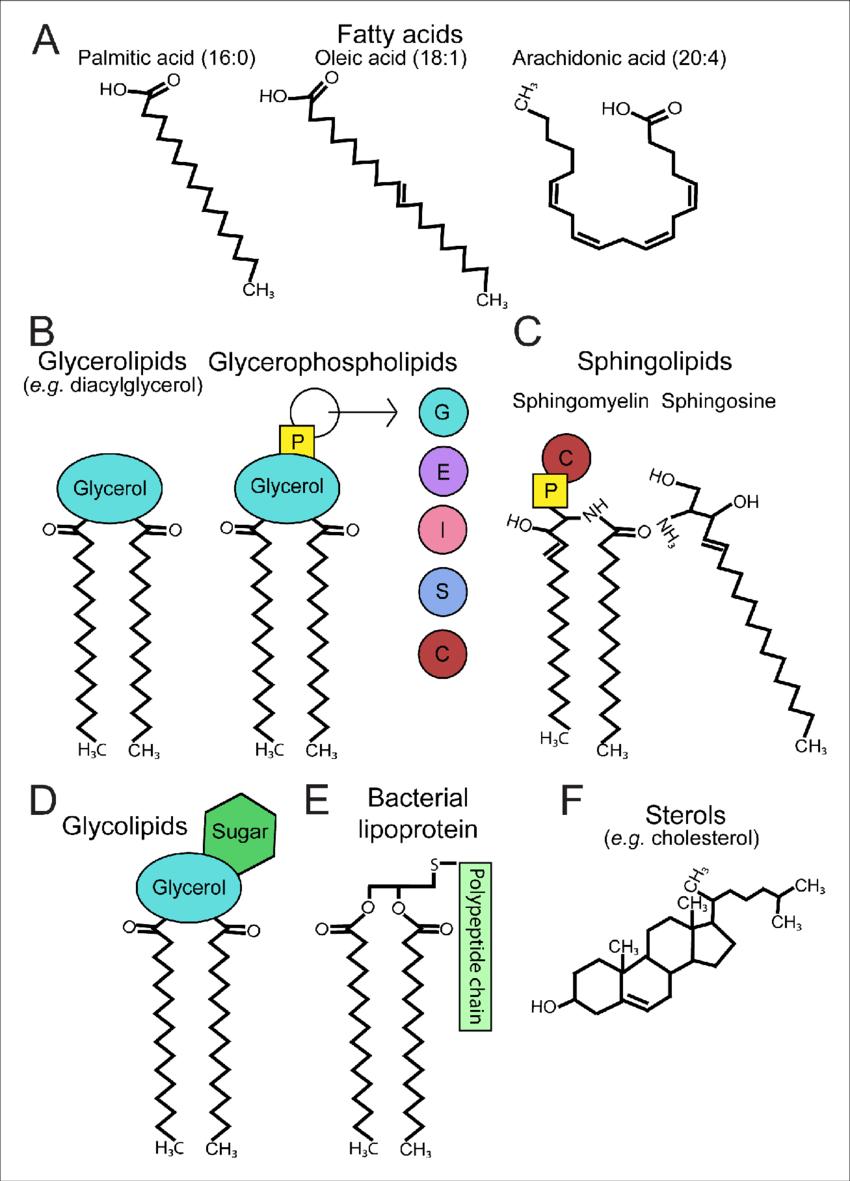 Classification of membrane
lipids (O'Neal et al., 2020).
Classification of membrane
lipids (O'Neal et al., 2020).
Triglycerides are the basic components of membrane lipids, accounting for over 50% of the total lipid content. Typical phosphatidylglycerol molecules have a polar head formed by two fatty acid chains and a non-polar tail.
Sphingolipids originate from sphingosine and have a long acyl chain with an amino group and two hydroxyl groups at one end. Glycolipids are mainly composed of ceramide or phosphatidic acid covalently linked to polysaccharide groups.
Although glycolipids account for less than 5% of the total membrane lipid content, they are generally present on the plasma membrane, and the types of glycolipids vary among different cells.
Cholesterol is a steroid compound with a steroid ring, a hydroxyl substituent, and an acyl chain. The hydroxyl group of cholesterol can interact with water, making cholesterol amphipathic. The cholesterol level in the membrane is usually less than 1/32 of the lipid content. Due to the small size of cholesterol molecules and their strong hydrophobic interaction with fatty acids, cholesterol plays an important role in regulating membrane fluidity, increasing membrane stability, and reducing the permeability of water-soluble substances. Additionally, cholesterol is a basic structural component of lipid rafts.
What are the main types and their functions of membrane proteins?
In addition to lipids, proteins are also present in membranes, accounting for approximately 50% (m/m) of the total membrane mass. The ratio of protein to lipid molecules in membranes is about 1:50, due to the relatively smaller size of lipids compared to proteins. Based on their binding to lipids, membrane proteins can be broadly classified as integral membrane proteins, peripheral membrane proteins, and lipid-anchored membrane proteins.
Integral membrane proteins are composed of one or multiple transmembrane domains. Peripheral membrane proteins do not span the membrane but are associated with the membrane surface to varying degrees. These proteins are often indirectly attached to the membrane by interacting with integral membrane proteins or with the polar head groups of lipids. Lipid-anchored membrane proteins are attached to the cell membrane by covalently linking to lipid molecules such as fatty acids or glycolipids. Fatty acid-bound proteins are mainly distributed on the inner side of the plasma membrane, while glycolipid-bound proteins are mainly distributed on the outer side of the membrane.
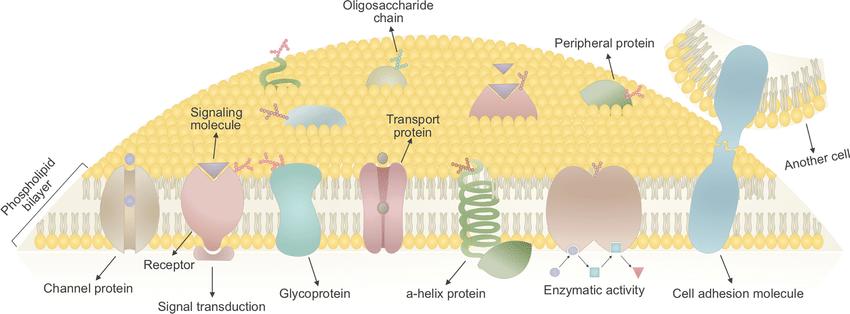 Schematic representation of plasma membrane and its associated membrane proteins (Meyfour
et al., 2021).
Schematic representation of plasma membrane and its associated membrane proteins (Meyfour
et al., 2021).
What are the main types and their functions of membrane glycans?
Some lipids and sugars in the outer layer of the cell membrane are covalently linked, as are most glycoproteins in the cell membrane. Short sugar chains attached to glycoproteins are called oligosaccharides. Polysaccharide molecules attached to complete membrane proteins in the outer layer are called glycan chains, as part of the extracellular matrix. Glycosylated compounds on the membrane can protect cells from mechanical and chemical damage, and help maintain the distance between cells, preventing unnecessary interactions between proteins. In addition, sugar classes in glycoproteins regulate protein folding, structure, and function to regulate protein solubility, transport, and signal transduction. In biological systems, sugars participate in cell differentiation and development, cell adhesion and movement, signal recognition, and immune response. More importantly, changes in glycosylation are associated with a variety of diseases, including viral and bacterial infections, cancer differentiation and metastasis.
The Function of Membranes
As the barrier of cells, the plasma membrane has important functions and is associated with many physiological and pathological processes. All components that make up the cell membrane play crucial roles in this process. Membrane proteins participate in a variety of processes required for normal development and physiology, and when disrupted, can lead to a range of diseases. Therefore, identifying membrane proteins with abnormal properties can lead to the discovery of new therapeutic targets. About 38% of all proteins encoded by the mammalian genome are membrane proteins, and more than 1/3 of current biomarker candidates are membrane proteins.
Lipid and lipid structure directly participate in various activities as messengers or regulators of signal transduction. In addition, protein-lipid interactions are involved in the localization of signal protein partners in specific membrane microstructure domains. Therefore, changes in lipids will alter cell signaling associated with various diseases, including cancer, obesity, neurodegenerative diseases, and cardiovascular diseases.
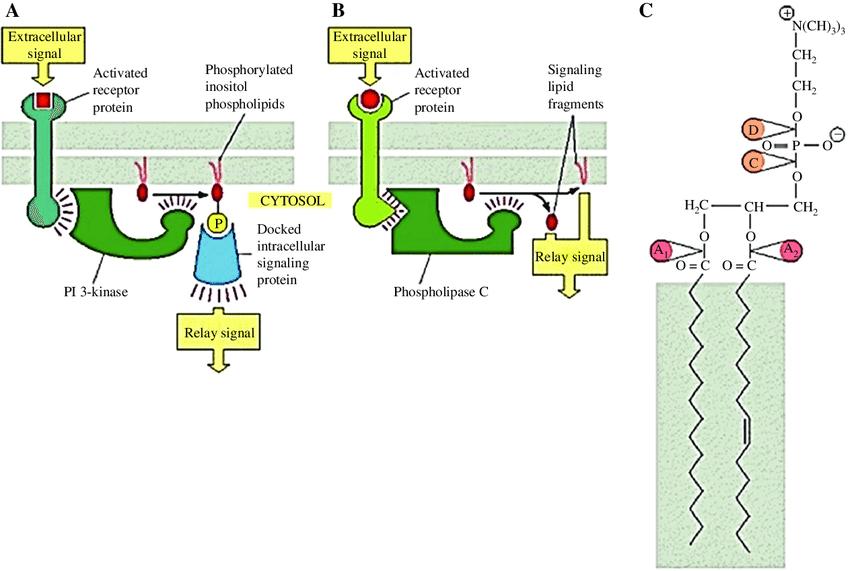 Some
functions of membrane phospholipids in cell signaling (Naeem et al., 2018).
Some
functions of membrane phospholipids in cell signaling (Naeem et al., 2018).
Omics mainly includes genomics, proteomics, metabolomics, lipidomics, glycomics, etc. Currently, there is still a lack of comprehensive and systematic research on membranes, as in other omics. By introducing the concept of omics into the membrane system, including cell membranes and intracellular membranes, and treating the structure, function, and molecular interactions of the membrane system as an organic whole, a new field of biomembranomics can be established to study the membrane system at a real, dynamic, and precise molecular level. Creative Proteomics provides membrane omics and functional analysis services for the study of cell membranes.
References
- O'Neal, Anya J., et al. "Lipid hijacking: a unifying theme in vector-borne diseases." Elife 9 (2020): e61675.
- Meyfour, Anna, et al. "The quest of cell surface markers for stem cell therapy." Cellular and Molecular Life Sciences 78 (2021): 469-495.
- Naeem, Sumaira, Geetha Viswanathan, and Misni Bin Misran. "Liposomes as colloidal nanovehicles: on the road to success in intravenous drug delivery." Reviews in Chemical Engineering 34.3 (2018): 365-383.
Related Services
* For Research Use Only. Not for use in diagnostic procedures.



